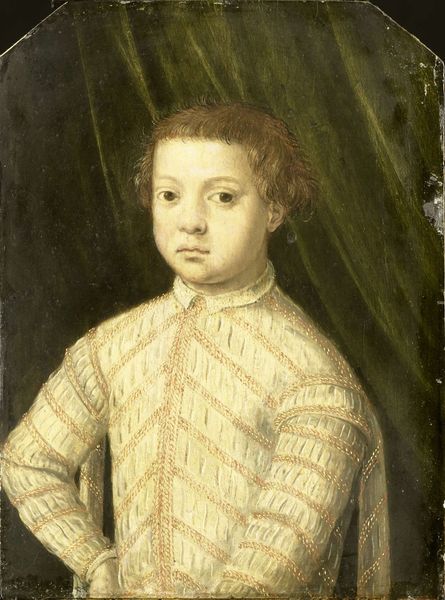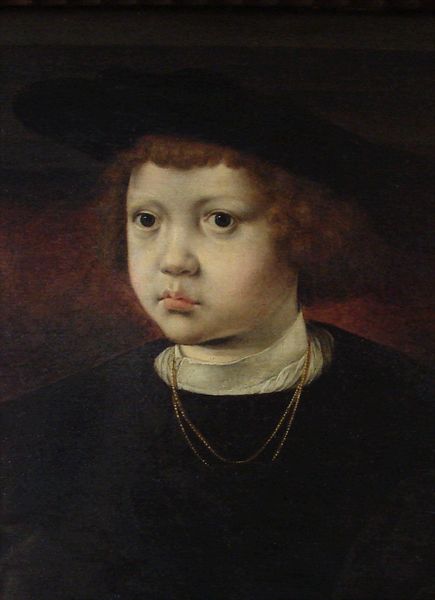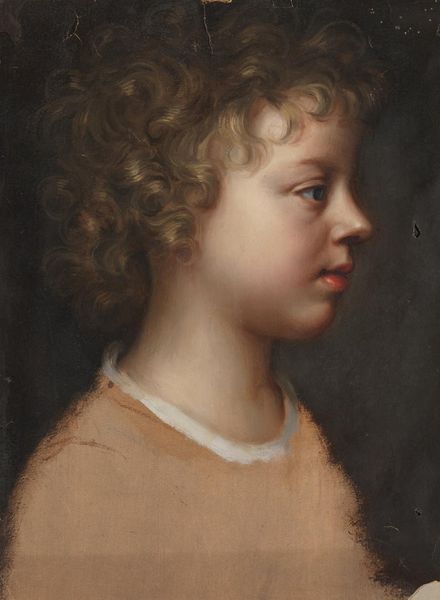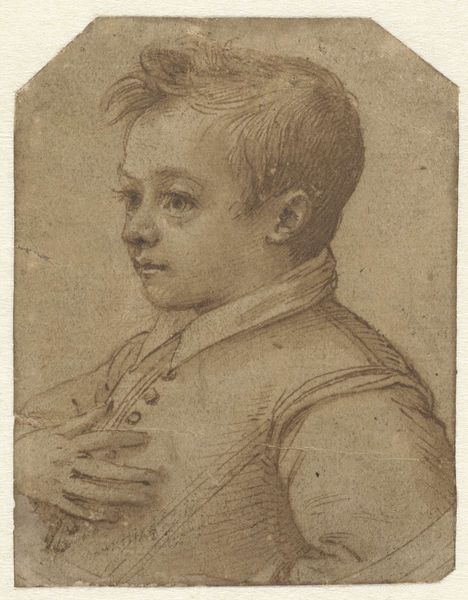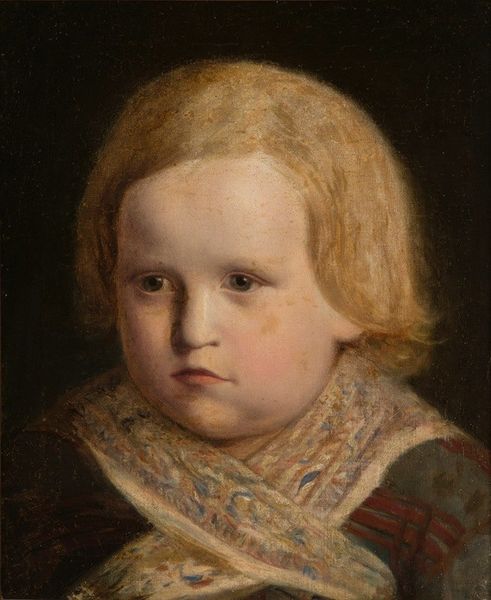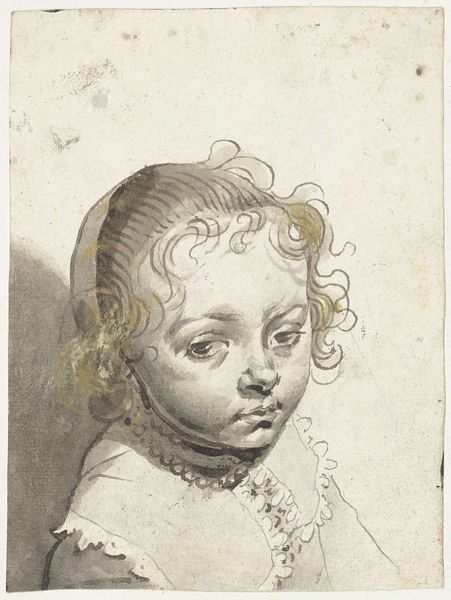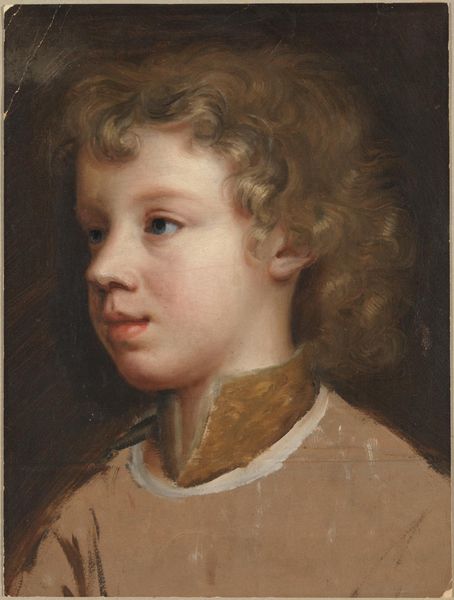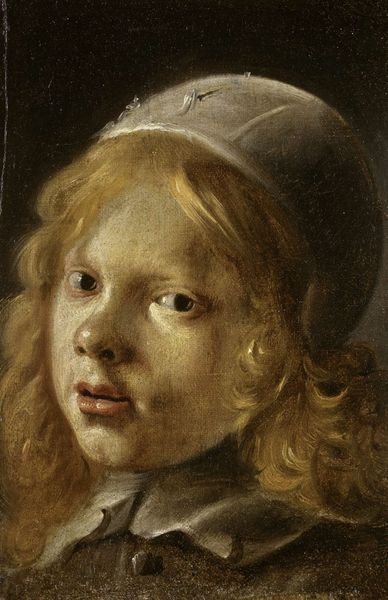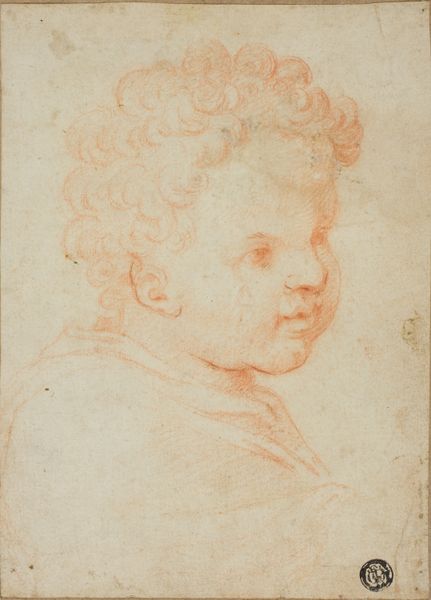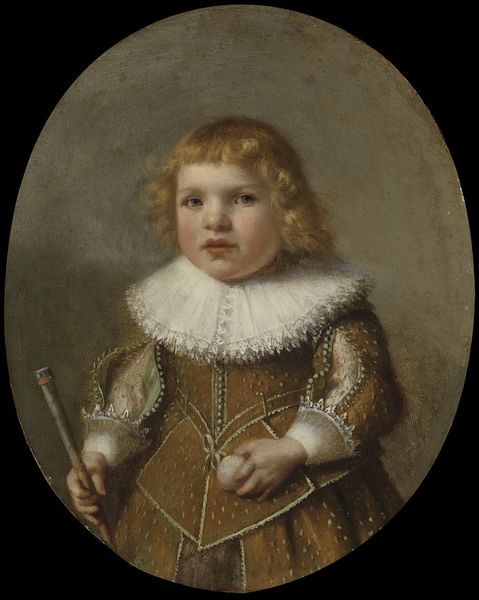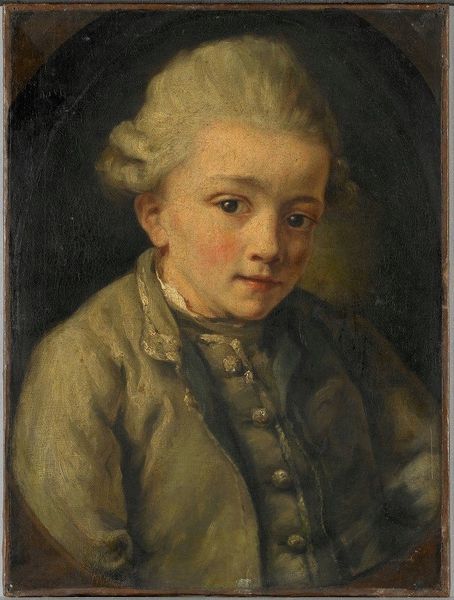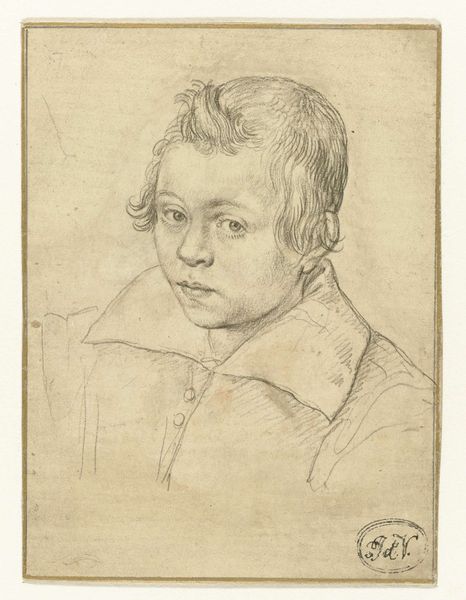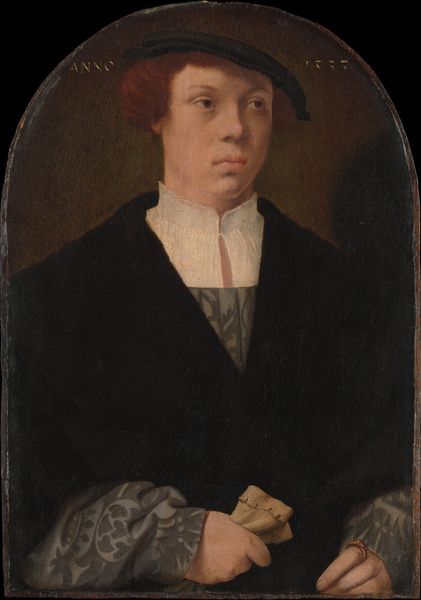
Portrait of a Boy about three years old, possibly Prince Balthasar Carlos, Son of the Spanish King Philip IV 1632 - 1650
0:00
0:00
painting, oil-paint
#
portrait
#
baroque
#
painting
#
oil-paint
#
history-painting
Dimensions: height 31.5 cm, width 25.4 cm, thickness 3.4 cm, depth 7 cm
Copyright: Rijks Museum: Open Domain
Editor: So, this is a painting identified as “Portrait of a Boy about three years old, possibly Prince Balthasar Carlos, Son of the Spanish King Philip IV," painted with oil sometime between 1632 and 1650. There is something quite haunting about this kid’s eyes… it's captivating. What catches your attention when you look at this portrait? Curator: The gaze holds tremendous significance, doesn't it? But before that, let's consider the color scheme. Do you see how the darkness envelops the child, save for his illuminated face and collar? It's the visual symbolism of innocence and purity—represented by his face and white collar—striving to emerge from the shadowy uncertainties, perhaps alluding to his destiny as royalty and the burdens he must bear. Does that resonate with you at all? Editor: Yes, definitely. I didn’t think about the contrast in that way, but that makes a lot of sense, especially with the historical context. So, the expression might indicate the weight of that royal burden, you mean? Curator: Precisely! And it may not be that this young boy is Balthasar Carlos, or not even royalty at all, it still embodies what most portraitures during the Baroque period strived to project. Remember, art acts as a cultural mirror reflecting anxieties of dynastic succession, the ever-present weight of legacy. Does it not provoke feelings about power, privilege, or childhood within you? Editor: It does now! It makes me think of what it must have been like to grow up in such a formal, restrictive environment, no matter how privileged you were. I guess it reflects a wider perspective of childhood in the 17th century than I previously thought about. Thank you. Curator: It has been my pleasure, these reflections remind us that imagery can transmit powerful cultural messaging.
Comments
No comments
Be the first to comment and join the conversation on the ultimate creative platform.
